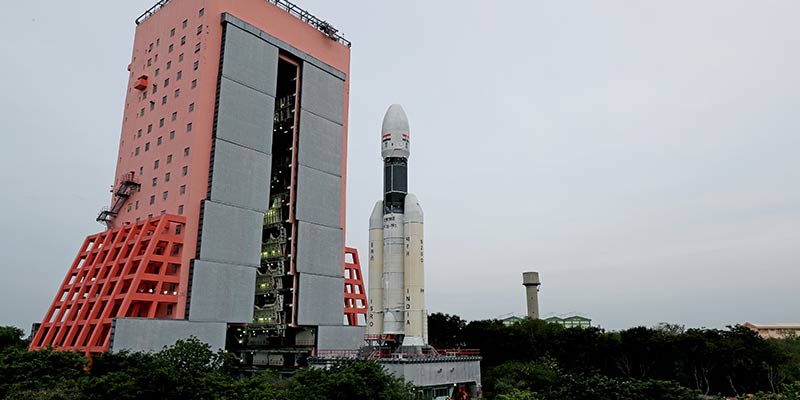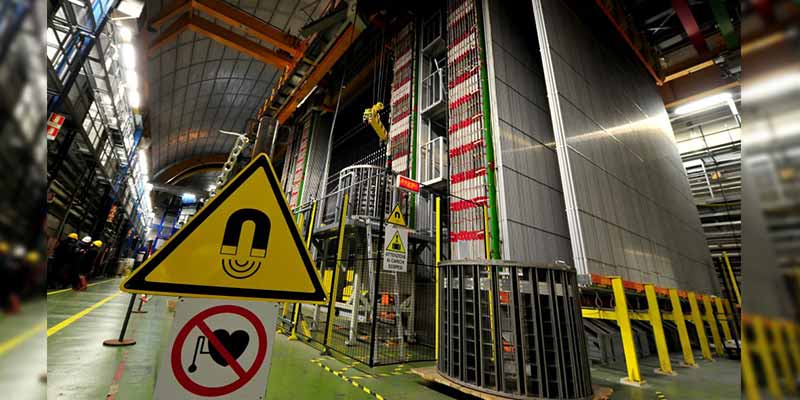- India
- Jul 13
Short Takes / GSLV Mk-III guns for glory
India's most powerful rocket launcher
If things go according to plan, the GSLV Mk-III will put Chandrayaan-2 into its designated orbit on July 14. Chandrayaan-2 is a lunar mission that will be visiting the moon’s south polar region.
Key points
The Geosynchronous Satellite Launch Vehicle Mark-III is a three-stage vehicle developed by ISRO and is India’s most powerful launcher to date.
The GSLV Mk-III is designed to carry the four-tonne class of satellites to the Geosynchronous Transfer Orbit (GTO) or a 10-tonne payload to the Low Earth Orbit (LEO), which is about twice the capability of the GSLV Mk-II.
Since the 1980s, the ISRO was dependent on foreign launchers to put satellites that weigh more than 2,300 kg into space, but that changed with the launch of GSLV Mk-III in 2017.
After a decade of work by ISRO, which had to overcome several hurdles in cracking the complex cryogenic technology and developing its own C-25 engine, which was used in GSLV Mk-III D1, the GSLV Mk-III was first launched on June 5, 2017.
With a liftoff weight of 640 tonnes, the GSLV Mk-III - which is powered by two solid motor strap-ons (S200), a liquid propellant core stage (L110) and a cryogenic stage (C25) - has been designed for carrying the four-tonne class satellites. The C25 is powered by CE-20, India’s largest cryogenic engine, designed and developed by the Liquid Propulsion Systems Centre.
The two strap-on motors of the GSLV Mk-III are located on either side of its core liquid booster. Designated as S200, each motor carries 205 tonnes of composite solid propellant and their ignition results in vehicle lift-off. The S200s function for 140 seconds.
During the strap-on functioning phase, the two clustered Vikas liquid engines of L110 liquid core booster will ignite 114 seconds after liftoff to further augment the thrust of the vehicle. These two engines continue to function after the separation of the strap-ons at about 140 seconds after liftoff.
This will be the third time that the ISRO is using the GSLV Mk-III. The first launch was when the GSLV Mk-III D1 successfully placed the GSAT-19 satellite in orbit on June 5, 2017.
The GSLV Mk-III D2, the second developmental flight of GSLV Mk-III, successfully launched the GSAT-29, a high throughput communication satellite, on November 14, 2018.
The GSLV Mk-III is set to be the one that will eventually carry Indian astronauts to space.
Neutrino observatory work set to begin
The Union government has approved a project to build the India-based Neutrino Observatory (INO) in Pottipuram, Tamil Nadu. The project aims to set up a 51,000 tonne Iron Calorimeter (ICAL) detector to observe naturally occurring atmospheric neutrinos in a cavern at the end of a 2-km-long tunnel inside a mountain.
This will help to reduce the noise from cosmic rays that is ever present overground and would outnumber the rare neutrino interactions even in a detector as large as the ICAL.
The INO project does not disturb the local ecosystem and does not release any radiation, as it does not have any radioactive substance. It measures cosmic rays.
There is no other neutrino detector in India at present. The ICAL at the INO would be the first of its kind.
The INO project is a multi-institutional effort aimed at building a world-class underground laboratory with a rock cover of approximately 1,200 m for non-accelerator based high energy and nuclear physics research in India.
The project includes...
* Construction of an underground laboratory and associated surface facilities in Pottipuram.
* Construction of an ICAL detector for studying neutrinos, consisting of 50,000 tonnes of magnetised iron plates arranged in stacks with gaps in between where resistive plate chambers would be inserted as active detectors.
* Setting up of a National Centre for High Energy Physics in Madurai for the operation and maintenance of the underground lab, human resource development and detector R&D along with its applications. The underground laboratory will be accessed by a 2,100-m-long and 7.5-m-wide tunnel.
The initial goal of the INO is to study neutrinos, which are fundamental particles belonging to the lepton family.
First proposed by Swiss scientist Wolfgang Pauli in 1930, neutrinos are the second most widely occurring particles in the universe, second only to photons.
In fact, neutrinos are so abundant among us that every second, there are more than 100 trillion of them passing right through each of us - and we don’t even notice them.
This is the reason why the INO needs to be built underground - 1,300 m into the earth. At this depth, it would be able to keep itself away from all the trillions of neutrinos produced in the atmosphere and which would otherwise choke an over-the-ground neutrino detector.
What are neutrinos?
* Neutrinos have been in the universe literally since forever, being almost 14 billion years old - as much as the universe itself.
* Neutrinos occur in three different types, or flavours - v e, v μ and v τ. These are separated in terms of different masses. From experiments so far, we know that neutrinos have a tiny mass, but the ordering of the neutrino mass states is not known and is one of the key questions that remain unanswered. This is a challenge the INO will set to resolve, thus completing our picture of the neutrino.
Neutrinos are key for our scientific progress and technological growth for three reasons…
* First, they are abundant.
* Second, they have very feeble mass and no charge and hence can travel through planets, stars, rocks and human bodies without any interaction. In fact, a beam of trillions of neutrinos can travel thousands of kilometres through a rock before an interaction with a single atom of the rock and the neutrino occurs.
* Third, they hide within them a vast pool of knowledge and could open up new vistas in the fields of astronomy and astrophysics, communication and even in medical imaging, through the detector spin-offs.
While this should be a moment of joy, there is also some scepticism, partly arising due to the fact that the neutrino, though so abundant, is a silent stranger to most people.


